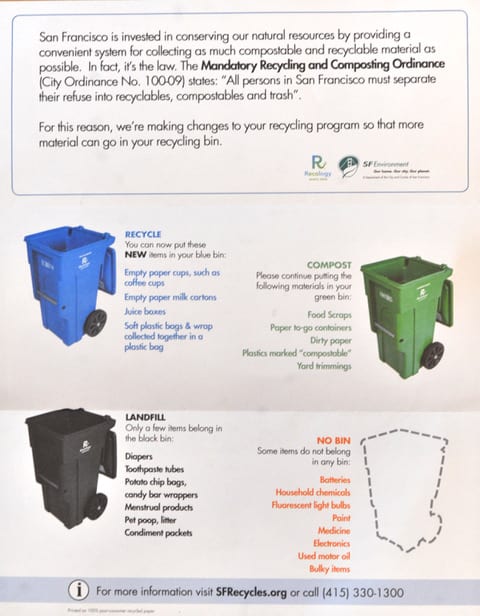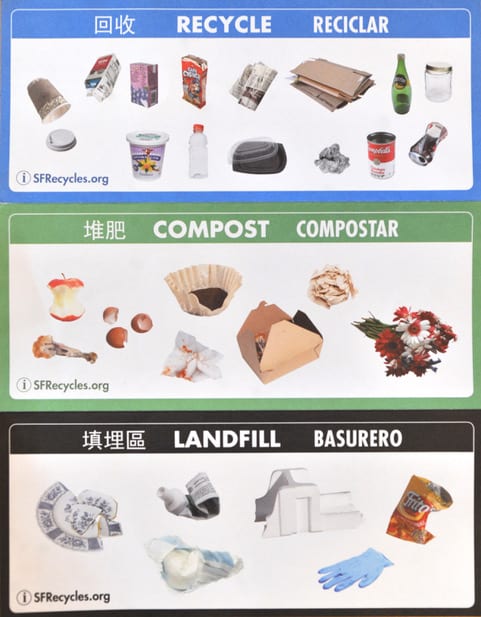By Bonnee Waldstein
The Glen Park Association’s final meeting of 2017 was packed with information and updates. GPA President Scott Stawicki kept things going apace, in order to cover all the topics, with time for Q and A.
The 4-1-1 about Calling 9-1-1:
It’s been headline news that San Francisco’s 911 system has fallen short in responding to emergency calls. The national standard is to answer 90% of calls in 10 seconds or less. In April, San Francisco was below 70%, and is now at 80%.
The 911 system is meant to be used when there is a crime in progress or potential danger to life, property or the environment.
Deputy Director of the Department of Emergency Management, Robert Smuts, is responsible for emergency communications. He explained the challenges to the system and how they are working to make improvements.
The scope of responsibility is huge. Between the 911 emergency call center, and the non-emergency 553-0123 line, there are over 1.2 million calls in a year.
Each call must be answered; triaged as to police, fire or medical; and dispatched. Half of the staff answers the calls, while the other half is on radio communication with the first responders.
Hiring was slowed by budget cuts during the recession. Staffing was depleted by a wave of retirements. On top of that, 40% more calls have been coming into the 911 system, due to population growth in the City and more actual incidents.
A lot of the increase involves quality of life issues, such as incidents related to homelessness. There are also many more inappropriate – nonemergency – calls, as well as accidental calls on smartphones.
Smuts noted that 911 can be called by any old, working cell phone. He also warned to lock your phone to prevent accidental dials to 911.
Non-emergency calls for police assistance should use 415-553-0123. This number is for events such as noise complaints, loitering, wellness checks, and the like.
To file a report for crimes not in progress and need for city service, call 311.
To address the shortfall in the emergency response system, Smuts reported a significant increase in hiring – 43 during the past fiscal year – bringing the level to 145.
For concise information about using the emergency, non-emergency and city services numbers, go to: www.maketherightcallsf.org.
For what questions to expect on a 911 call, go to: www.sfdem.org/calling-9-1-1.
Neighborhood Update by District 8 Supervisor Jeff Sheehy:
Supervisor Sheehy highlighted the legislation he’s sponsored, including:
Sheehy was a sponsor on passed legislation which bans bicycle chop shops. This practice creates hazards caused by grease, oil, and blow torches. The Department of Public Works will clear impacted hazardous areas. The bicycles will be stored and restored to their rightful owners if proof of ownership can be provided.
He’s also been a sponsor on a bill requiring labeling of meat raised with the use of antibiotics. This affects companies having 25 stores or more. Sheehy noted that the use of the drugs is not an animal health issue; rather, antibiotics promote rapid growth of the animal, which services the interests of the meat industry. The use also has downstream environmental impacts.
Sheehy’s biggest focus has been on affordable housing. The Board of Supervisors has passed an inclusionary housing bill which requires developers to set aside 10% of rental units for low income, and 10% for middle class occupants.
The Fix-It Team is Coming to Glen Park:
The supervisor introduced Sandra Zuniga, who is heading up the Mayor’s Fix-It Team. This was established in 2016 to address neighborhood blight and quality of life issues, through thoughtful engagement with the communities involved. It’s an umbrella concept that includes all of the City agencies responsible for solving the issues raised by the neighbors themselves.
The team has been very active in the Castro and it’s coming to Glen Park. In addition to seven City agencies, BART is included due to the many challenges posed by the station in Glen Park.
There are five well-defined steps in the Fix-It process:
1. Identify the problems and prioritize them at community meetings.
2. Evaluate the feedback to see patterns and locations. Walk through the neighborhood to visualize the concerns.
3. Validate the issues with agency walk-throughs and police drive-alongs, including at nighttime.
4. Execute solutions according to an action plan.
5. Report back to the community on progress.
The Fix-It Team is an ongoing process. As problems are addressed, new issues are taken up, and the team returns to the neighborhood.
The Fix-It process is already in place in Glen Park, as Ms. Zuniga has met with the Glen Park Association, spearheaded walk-throughs by city agencies and residents of the problems identified, mapped the trouble spots identified by residents, and prioritized the problems to be addressed. The issues will sound familiar: safety, lighting, tree maintenance, passable sidewalks, etc. – the stuff we care about.
1. DPW will remove nonviable trees from the Greenway in time for the December 9 tree planting (see Greenway, below.)
2. At the Diamond/Bosworth intersection, the planters will be replanted, and the irrigation system fixed. A second DPW Neighborhood Ambassador will be added to maintain the area and clean up trash.
3. The team will work with BART to paint and maintain the flower stand in the plaza.
4. Urban Forestry will do an assessment of the health of the neighborhood trees.
Other specific concerns on the fix-it to-do list: Lighting in the San Jose Avenue overpass/Arlington Street area, traffic on Burnside, Paradise (both dead-ends) and Elk Streets, the median along Bosworth Street, timing of traffic lights in neighborhood intersections.
The Fix-It Team has an ongoing process. They recognize that there are many problems that need attention; as they are addressed in order of priority, other problems will be fixed by the team based on neighborhood concerns.
Anyone who wants to submit a comment or be added to an email list for updates, may contact the Fix-It Team by writing to: fixitteam@sfgov.org.
Introducing the New Ingleside Station Captain:
In a Citywide shuffle of police brass, Captain Joseph McFadden has left the Ingleside Station for the Gun Crimes Unit. In his place, Supervisor Sheehy introduced Captain Jack Hart. Hart’s roots in the community and the department run deep. He is a Diamond Heights native and has spent his entire life in the Ingleside Station area. His great grandfather was killed in the line of duty on the SF police force.
Hart spoke about the concept of the crime triangle: location, suspect, victim. If one of those elements is missing a crime won’t occur. Deterrents to crime include lighting, crosswalks, street patrols, and community participation.
Hart addressed some questions raised by neighbors at the meeting:
Homeless people wandering Glen Park – how can we help? Hart said to contact the Homeless Outreach Team. Some people refuse help, but the team is persistent. Ultimately, law enforcement can intervene to get people the resources they need.
Why are there are more traffic violations in the neighborhood, and increasing road rage? A big factor is the use of navigation apps to avoid traffic, which bring drivers off the main corridors and into narrow residential streets. Measures that might mitigate this are flashing lights, speed bumps, and more signage.
Email Captain Hart with your concerns, questions and suggestions: jack.hart@sfgov.org.
Glen Canyon Park Rec Center Renovation:
Rec and Park’s Brett Desmarais updated the group about what remains to be completed.
The interior is done except for some miscellaneous items.
The boilers were replaced when the playground was renovated, so there are functional systems for heat as well as ventilation. However, there is no air conditioning.
Security systems are in place and working, including alarms, motion detectors and cameras.
The landscape work continues, with lawn installation getting underway. After the turf is laid, the area will be closed for 30 days while the planting gets established. It should be open around Thanksgiving.
Renovation of the ball field was not part of the project, although a lot of work is being done on the irrigation system. Grants would be needed to fund a redo of the entire area.
Someone asked about getting shaded areas in the playground; it’s a big problem with the recent heat waves. There’s no funding for that as of now.
Fencing will be installed to house the trash bins and the metal storage containers.
Good news: Funding has come through to redo the Sussex Street stairs – a project long awaited. Construction should take around two months.
Desmarais observed that every project has a small contingency cushion. Maybe if there are some funds left over from the Sussex stair project, work can be done on some of the other smaller items.
Glen Park Greenway:
GPA Vice President and Greenway Taskmaster Stephany Wilkes told everyone to mark their calendars for the December 9 tree planting, from 9:00 AM – noon, rain or shine.
DPW will move 20 failing trees this month in advance of the planting. Small groups will do some clearing and cleanup before this. As usual, workgroups will do a celebratory potluck.
The DPW Clean and Green Team and Friends of the Urban Forest will be there to help.
This part of the Greenway project, Phase One, is funded by a $70K Community Challenge Grant. Twenty-four coast live oaks will be planted along the Brompton, Chilton and Burnside stretch. Some will be saplings; many will be acorns, which give the trees a better chance to thrive. The project has received an additional grant from SFPUC to provide two irrigation water meters.
To get on the email list for updates, write to vicepresident@glenparkassociation.org. There is also a Greenway tab on the GPA website, glenparkassociation.org.
Recology Service Changes:
Big changes are on the way in the Recology bins. Paul Giusti, community outreach manager, explained that the size of the bins will be changing due to new patterns in residential waste disposal.
Whereas now all the bins are 32 gallons, the black will be 16, the green will be 32 and the blue will be 64. The black bins will have less capacity because less waste is going into landfill, due to the diligence of residents and consistent with the City’s Zero Waste by 2020 program. The blue bins will have more capacity because more items can be recycled (see graphic below), and because of what Giusti calls the “Amazon effect,” which probably needs no further explanation.
The dimensions of the bins are designed to have much the same footprint so that the blue bin will only be a couple of inches larger. The smaller black bin will have a raised floor inside for the reduced capacity, but outwardly will be the same size.
There won’t be any change in charges, as the rates were just raised in December 2016. It’s a better deal, says Giusti, because for the $40.04 monthly charge, residents are getting 16 gallons more overall capacity. Also, with the enlarged blue bins, breaking down cardboard boxes won’t be quite as necessary.
The changes do not affect commercial businesses; they apply only to residential units of five units or fewer.
Glen Park will be part of Phase 4 of the roll out. We can expect our new bins in May 2018.
At the meeting, it was revealed that many items have now been deemed recyclable, such as soy/rice/almond milk and similar boxes, empty paper coffee cups and plastic lids, and soup and juice boxes. The rule of thumb for these and similar items is that they be empty and clean. Also on the list are worn textiles placed inside a clear plastic bag. Plastic bags and film can also go in the blue bin but should be squashed down inside another bag, no larger than around basketball size.
Below is further information about the changes.


Recology’s helpful webpage might answer more questions about what goes where. www.recology.com/recology-san-francisco/what-bin/